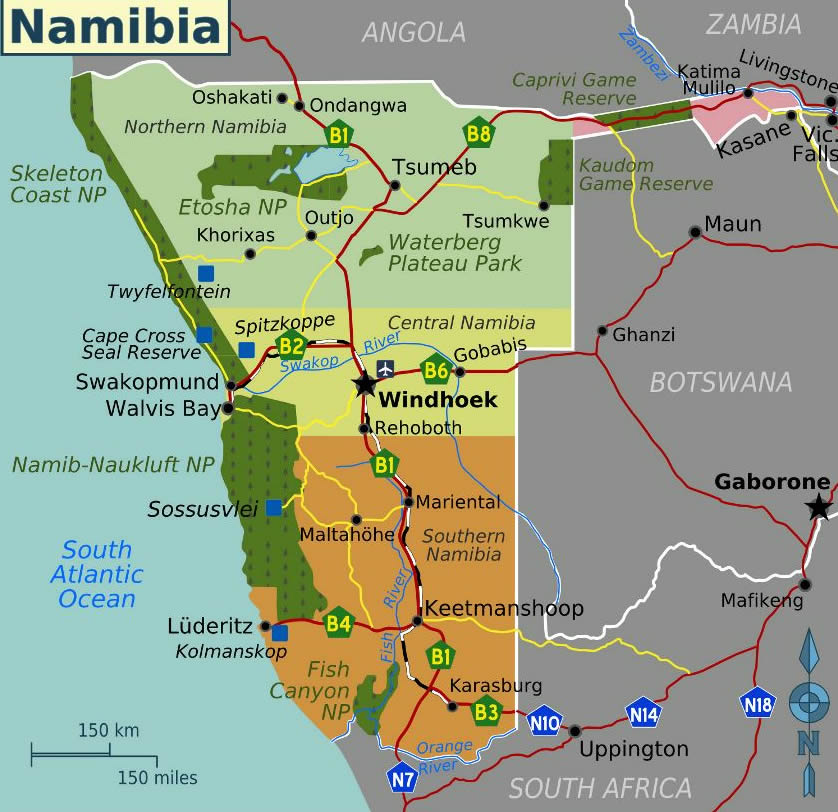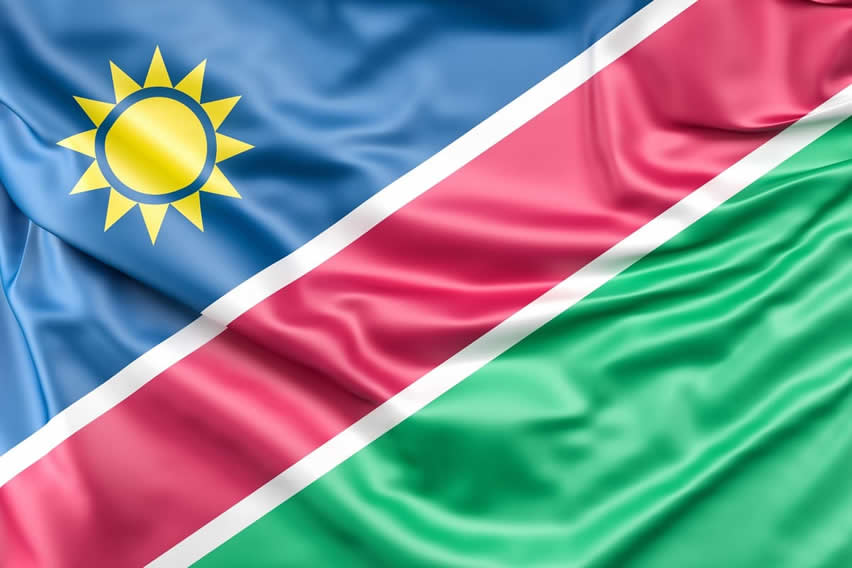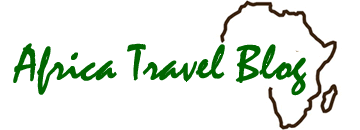Namibia is a Southern African nation situated off the South Atlantic Ocean, to the north of South Africa and west of Botswana. The country was the former German Colony of South-West Africa prior to the First World War. At the end of the war, it was occupied by neighboring South Africa and administered as a mandate territory until the end of the 2nd World War.
The South African Republic continued to administer the territory after this despite its claims not being recognized internationally. In 1966 SWAPO (South-West Africa People’s Organization), a Marxist Guerilla group which was led by the country’s first President Sam Nujoma launched an armed struggle for independence. In 1988, South Africa agreed to secede from Namibia and full independence under a United Nations peace plan was granted on the 21st of March 1990.
Namibia has since its independence been a relatively peaceful and stable nation. The country is blessed with mineral wealth and is presently the fifth largest producer of Uranium.
Administration:
The country is divided into the thirteen administrative regions of; aprivi, Erongo, Hardap, Karas, Khomas, Kunene, Ohangwena, Okavango, Omaheke, Omusati, Oshana, Oshikoto, Otjozondjupa; with Windhoek as its capital city.
Namibia Economy:
Namibia is a resource rich nation whose economy presently relies heavily on the extraction and processing of minerals.
Most of these are exported mainly to the United States and South Africa. Minerals found in Namibia include; uranium, tungsten, zinc, silver, copper, lead and diamonds.
Major industries are; food processing, dairy products, mining and meat and fish processing. Agriculture is also practiced in parts of the country and foods grown include; millet, sorghum, peanuts, corn and grapes. The country maintains strong economic ties with South Africa and the Namibian Dollar is attached to the South African Rand at one-to-one.
Namibia Map

Flag of Namibia:

The present Namibian Flag adopted on the 21st of March 1990 on the same day the country achieved its independence is viewed by Namibians as a symbol of the country’s struggle for independence, unity and peace.
The colors on the flag were adopted from those of the SWAPO flag. The blue color represents the sky, water and the ocean. The white color represents unity and peace.
Red is for the country’s people and their determination to work towards a better future for the people of Namibia. Green is for the natural vegetation and farmlands. The yellow sun represents life, warmth, energy and the Namib Desert plains.
People of Namibia:
Namibia is home to an estimated population of 2, 044, 147 people. The main ethnic groups residing in the country are the Ovambo (the most popular tribe accounting for about a half of the country’s population), Kavangos, Herero, Damara, Nama, Caprivian, Bushmen, Baster and Tswana. There is also a small white population in the country.
English is the official language in Namibia and is widely spoken by a majority of the country’s population.
Other common languages are German, Afrikaans, Oshivambo, Herero and Nama. Christianity is the main religion in Namibia and a small part of the population practices traditional religious beliefs.
Sports in Namibia:
Soccer is probably the most popular team sport in Namibia. The country is a recent entrant on the international team joining FIFA in 1992.
The country’s national team participates regularly in qualifiers for the Africa Nations Cup and made its debut at the tournament held in Burkina Faso in 1998.
Namibia exited at the first following two losses against the Ivory Coast and South Africa and a draw against Angola. Popular local clubs borrow their names from top European clubs and include; Leeds United, Monaco, Arsenal, Manchester United, Rangers. More locally named clubs are; Young Ones, Hot Flames and Bingo.
Other sports played in Namibia are; volleyball, basketball, tennis, swimming, cricket, hockey and rugby.
Namibia Rugby:
Namibia is one of the leading rugby union playing nations in Africa. The country is a distant second behind South Africa (a world power) in the sport on the continent.
The country has one of the strongest club competitions in Africa and a number of Namibians play for teams in the Currie Cup tournament in South Africa which can be deemed as one of the reasons for the relatively high standards of the game here when compared to other African nations.
The national team participated at the 1999 World Cup in Wales and the 2003 World Cup in Australia.
Health services in Namibia:
Decent health services for travelers can be found in the city of Windhoek and other key towns in the country. Major hospitals in the city are; the Windhoek Central Hospital, Medi-Clinic Windhoek and the Katutura Hospital. Food and water hygiene precautions should also be observed especially outside Windhoek where safe drinking water may not be available.
For purchasing simple prescription and over-the-counter medicines, there are a number of pharmacies in even the smaller towns. HIV/AIDS is a major health problem in the country and safe-sex should be practiced when in the country.
Emergency Contacts:
-Namibia Police Emergency No: 10111
-Emergency Ambulance and Fire Service in Windhoek: 211 111.
Namibia Currency:
The Namibian Dollar (NAD or N$) is the title of the Namibian Currency. The currency was introduced in 1993 and to replace the South African Rand.
The currency is attached to the rand at a rate of one-to-one. One dollar is equivalent to 100 cents.
Denominations: coins exist for 5, 10, 50 cents and 1 and 5 N$. Banknotes are available for 10, 20, 50, 100 and 200 N$.
At the time of writing (August 2006), One US$ was equivalent to N$ 7.0454; One British Pound was equal to N$ 12.9849 and One Euro was equivalent to N$ 9.00206. Exchange rates for the Namibian dollar against major currencies can be found using a number of online resources such as yahoo finance. When in the country; some hotels and banks offer foreign exchange services. There are also foreign exchange bureaus including at the Windhoek International Airport.
Namibia Facts & Figures:
– Location: Southern Africa, off the South Atlantic Ocean, to the north of South Africa.
– Capital City: Windhoek.
– Population: 2, 044, 147.
– Other major towns and cities: Gobabis, Rehoboth, Walvis Bay, Karasburg.
– Religion: Christian, Indigenous beliefs.
– Languages: English is the Official language. Others widely spoken are; Afrikaans, German, Oshivambo, Herero, Nama.
– Currency: Namibian Dollar (NAD).
Public Holidays in Namibia:
-New Year’s Day Saturday 1st January
-Independence Day 21st March
*Good Friday
*Easter Monday
-Labor Day/ Workers Day (Namibia) 1st May
– Cassinga Day 4th of May
-Ascension Day on the 5th of May
-Africa Day on the 25th of May
-Heroes Day on the 26th of August
-Human Rights Day 10th December
– Christmas Day on 25th of December
-Family Day on the 26th of December
* dates vary in depending on the calendar year.
Etosha National Park:
Once one of the largest game parks in Africa, Etosha’s boundaries have been greatly reduced by increases in population and administrative boundaries over the 20th century. The park is however still Namibia’s premier wildlife sanctuary and is home to a variety of wildlife such as; lion, elephant, zebra, cheetah, rhino, warthog, giraffe and leopard.
Within the park is the “Etosha Pan” a once permanent lake, the pan is now a depression that temporarily fills up during the rainy season and attracts a variety of birds here such as flamingo. The park is also home to an estimated 340 bird species as well amphibians and reptiles.
The park can be reached by road from Windhoek and the main entrance gate “Andersson Gate” is situated at the south end of the park. Accommodation is provided at three campsites and a number of lodges.
Hotels in Namibia:
There are a number of decent hotels in Namibia. The country has a fast developing tourism industry and made its mark on the international scene when Angelina Jolie and Brad Pitt chose the country to be the birthplace for their child.
Apart from hotels, you can find a number of luxury lodges and tented camps that provide accommodation for visitors to the country’s parks and reserves.
Some of the more established hotels and game lodges can be booked online or through your travel agent. Hotels may also offer a pickup service for their guests on arrival at the Windhoek International Airport. Accommodation in the country is relatively affordable and finding a place to stay while on holiday here usually depends on one’s needs.
Wildlife Parks and Reserves in Namibia:
Khaudom National Park: located in the northeast of Namibia in the Kavango Region, near the country’s border with Botswana, this reserve is somewhat isolated and not as developed as other game parks in the country. There two campsites for visitors here and wildlife includes; lion, hyena, antelope, elephant, buffalo, giraffe, warthog, cheetah, leopard and hartebeest.
Waterberg National Park: encompassing a raised plateau, this park is situated about 70 km from the town of Otjiwarongo, though it can also be reached from Waterberg. The park is home to a number of rare animal species such as; black rhino, roan antelope and sable antelope. There is a lodge here and campsites for visitors.
Other wildlife parks in the country worth visiting are: Mahango Game Reserve, Caprivi Game Reserve, Namib-Naukluft National Park and the Kaokoland Nature Reserve.
Tourism in Namibia:
Since its independence, Namibia has steadily developed its tourism industry and has become a popular holiday destination for many wishing to enjoy a rich cultural experience, relaxing vacation or go on safari. The country is home to a number of quality hotels and resorts, entertainment options including casinos, nightclubs, pubs and discotheques.
The Namib Desert: an area rich in minerals such as tungsten and diamonds, the Namib Desert is one of the main features of Namibia’s geographical landscape. This expansive desert regarded as one of the oldest in the world is home to a number of interesting sand formations including some of the highest dunes ever seen and the “dune sea”. The desert is situated about 450 km from Windhoek and can be reached by either road or charter flight.
Namibia Wildlife Parks: the country is blessed with a number of game parks and reserves that are home to healthy wildlife populations. Many of these parks have adequate road networks and offer campsites and lodges for visitors.
Outdoor Activities: Namibia also offers access to a variety of sporting and recreational activities. Visitors to the country can indulge in; bird watching, abseiling, skydiving, paragliding, hiking, cycling, hot air balloon excursions, canoeing and rafting.
Consular Services
Embassy Directory:
Namibian Embassies and Consulates in Asia:
The Embassy of Namibia in China:
2-9–2 Ta Yuan
Diplomatic Office Building
BEIJING 100600
Tel: 8610-653-22211
Fax: 8610-653-24549
The Embassy of Namibia in India:
D-6/24 Vasant Vihar
NEW DELHI
110 057
Tel: 91-11-614 0389
Fax: 91-11-614 6120
The Namibian High Commission in Malaysia
No 11 Jalan Mesra
Off Jalan Damai
55000 KUALA LUMPUR
Tel: 60-3-243-3595/241-6552/241-8949
Fax: 60-3-241-7803
Namibia Embassies and Consulates in Europe:
The Embassy of Namibia in Austria
Strozzigasse 10-14
1080, Vienna
Tel: 431-402 937/1/2/3
Fax: 431-402 9370
The Embassy of Namibia in Belgium
Avenue de Tavuren 454
B1150 Brussels
Tel: 32-2-771 1410
Fax: 32-2-771 9689
The Embassy of Namibia in France
80 Avenue Foch/ 17 Square de l’Avenue Foch
75016 Paris
Tel: 33-1-44-17 3265/76
Fax: 33-1-44-173273
The Embassy of Namibia in Germany
Wichmannstrasse 5
2nd Floor
10787 Berlin
Tel: 49-30-254-0950
Fax: 49-30-254-09555
The Embassy of Namibia in Russia
2nd Kazachy Lane
House No. 7
Moscow
Tel: 7-95-230 3275
Fax: 7-95-230 2274
The Embassy of Namibia in Sweden
Luntmakargatan 86-88
111 22 STOCKHOLM
P.O. Box 19151
SE-104 32 Stockholm
Tel: 46-8-612-77 88
Fax: 46-8-612-66 55
The Namibian High Commission
6 Chados Street
London WIG 9LU
Tel: 44-207-636-6244
Fax: 44-207-636-5694; 637-099
Namibian Embassies and Consulates in North America
The Embassy of Namibia in the United States
1605 New Hampshire Ave, N.W.
WASHINGTON D.C. 20009
Tel: 1-202-986 0540
Fax: 1-202-986 0443

